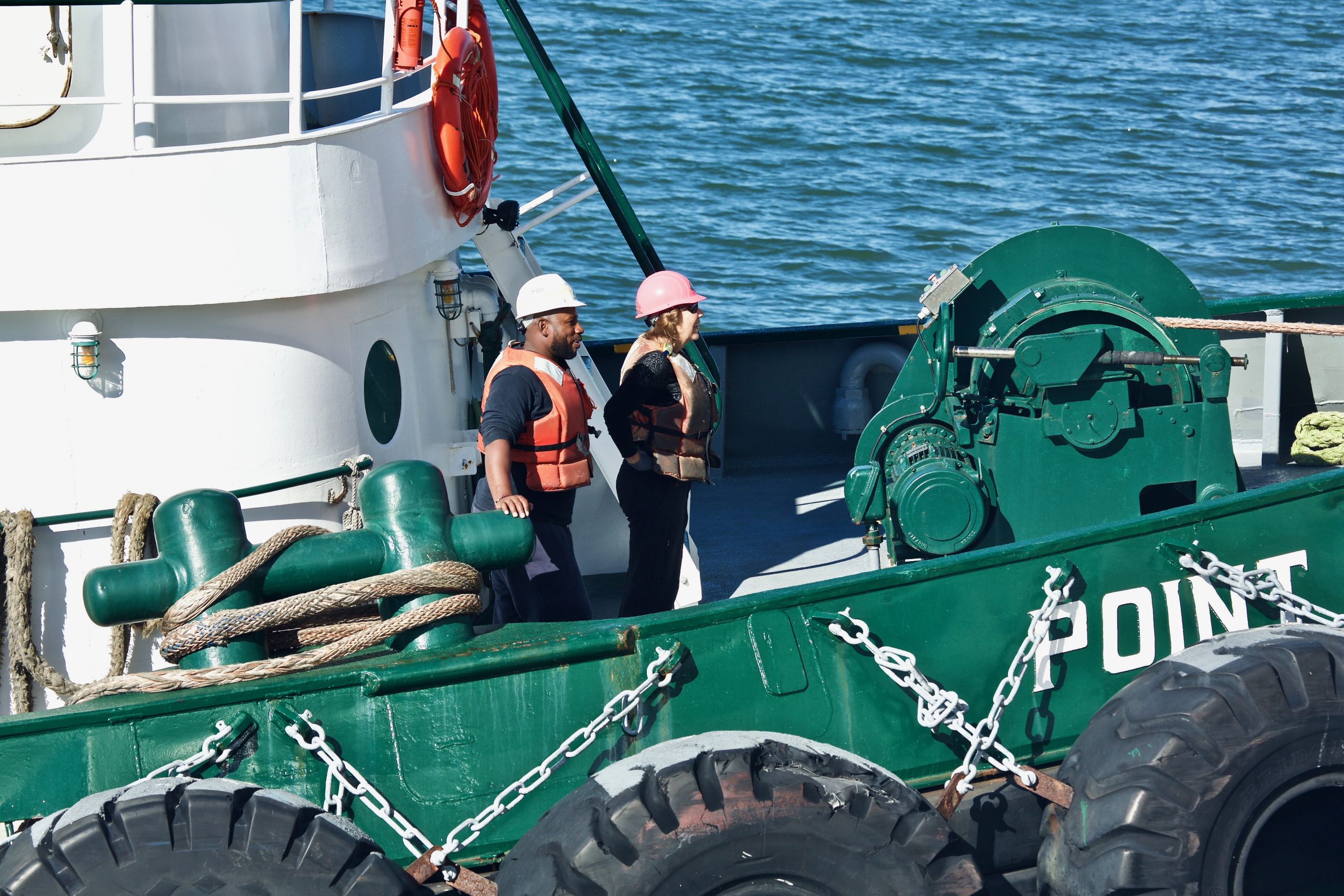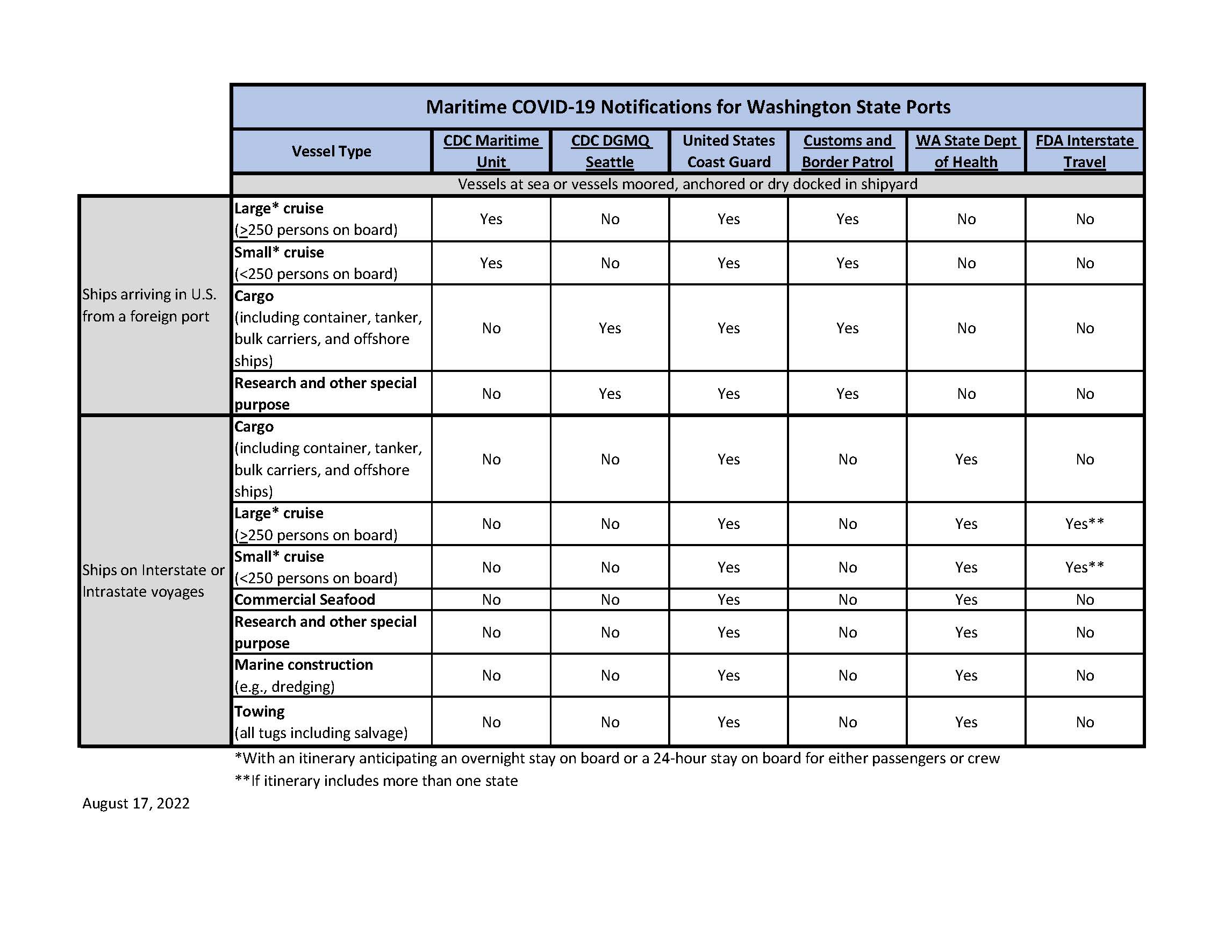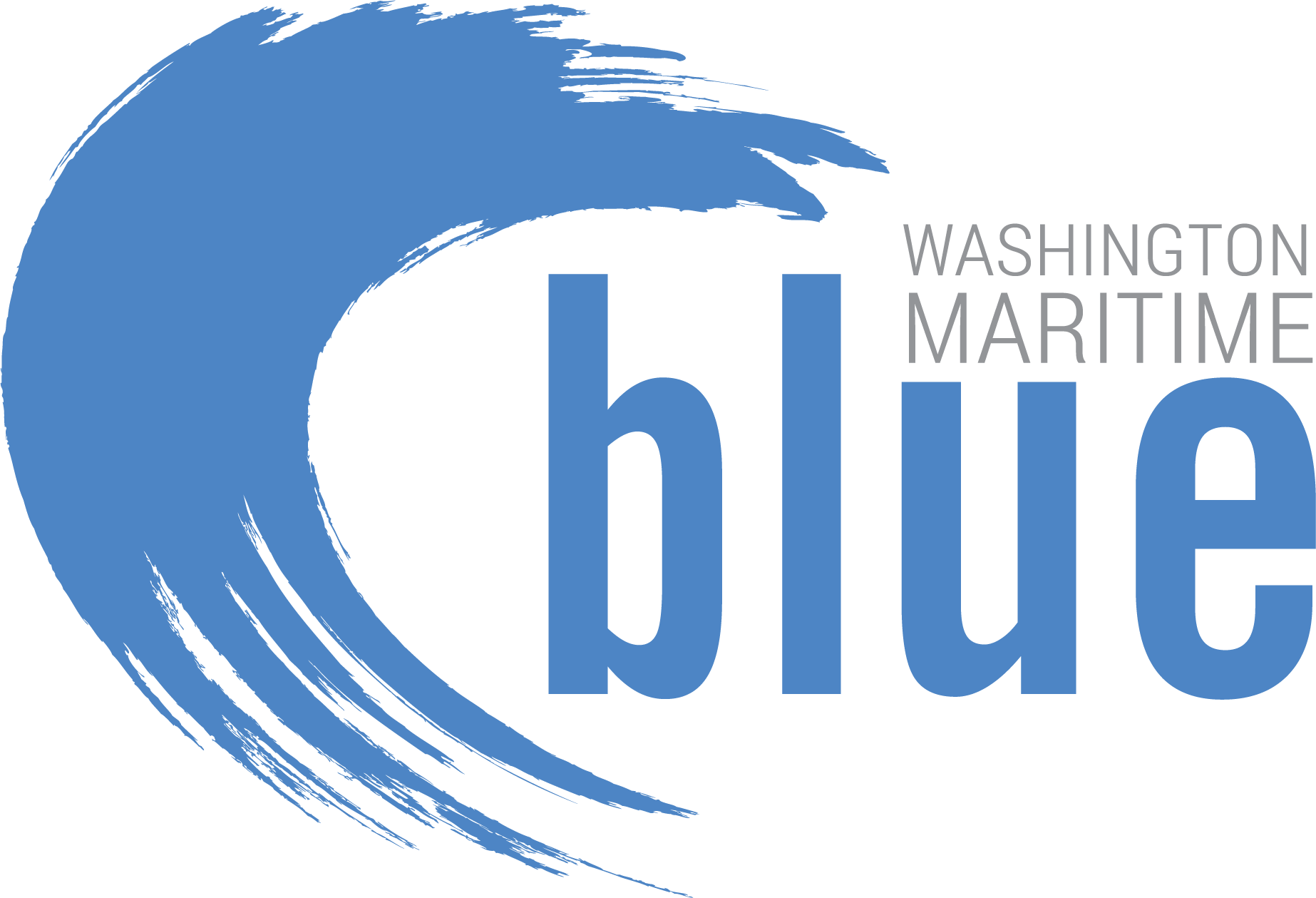
Guidance for Vessels
Keep your vessel covid free
Pre-embarkation risk reduction period
- For the 2 weeks prior to sailing, educate your crew on ways to reduce their exposure risk.
- Avoid high risk gatherings
- mask when around others
- monitor for symptoms and test if symptomatic
Pre-boarding screening and testing
- Per Washington State guidance: Workers and passengers should test negative for COVID-19 prior to boarding a vessel. They should test negative within 48 hours prior to boarding if using a molecular test (NAAT), or they should test negative on embarkation day prior to boarding if using an antigen test.
- Anyone with documented COVID-19 infection in the previous 90 days should test negative on embarkation day prior to boarding using an antigen test (acceptable documentation of a prior infection is a positive viral test result >10 days and <90 days prior to pre-embarkation testing.
- Before boarding a vessel, screen workers and passengers for symptoms of COVID-19 or known close contact exposure to a person with COVID-19 in the 10 days before embarkation. Close contacts should not board if they are not up to date on vaccines.
As an additional measure of safety, if employees are not up to date on vaccination, or in times of elevated community transmission or a concerning variant, consider a 3-5 day pre-travel quarantine with testing prior to entering the workplace
- Pre-travel screening and testing
- PCR or molecular tests are still advised prior to travel, but antigen tests may be used if necessary
- Safe Travel
- All employees should be masked during air, rail, bus, and car travel at all times.
Vaccinate
Ensure all crew are up to date on vaccinations
Prepare the vessel
Review “General Recommendations” from the Washington State Guidance
Ensure an adequate number COVID tests are on board. Rapid antigen tests are acceptable but must be used multiple times over a course of 2-3 days if someone is symptomatic. Ensure enough tests to test the entire crew 2-3 times if necessary.
Oral antivirals – if you have crew at high-risk for severe COVID (over 65 or at high risk for severe COVID) consider carrying oral antivirals on board.
Contact Discovery Health MD to discuss carrying oral antiviral medication
Ensure an adequate supply of PPE on board
- N95 masks for medical staff – must be fit tested
- KN95 masks for crew
- Face shields/eye protection
- Gloves
- Gowns
Daily symptom monitoring
Crew should self-monitor for symptoms and isolate and test if symptomatic. If there is a documented case on board, medical staff should perform daily symptom and temperature monitoring
Test if symptoms/exposure
If a crew member is symptomatic:
Test with a rapid test. If negative, isolate crewmember and retest in 24 hours.
If, after 2 negative tests, if the symptoms are resolved/improving, the crewmember has not had a fever in 24 hours without the use of fever reducing medications and is not a close contact to a known case in the prior 14 days, the crewmember may be released from isolation. They should mask at all times until symptoms resolve.
Evaluate for alternate diagnoses
If a crewmember is a close contact of a known case and develops symptoms, they should remain isolated until symptoms resolve even if they have two negative tests and they have completed any close contact quarantine recommendation.
Isolate
- If a crewmember tests positive, isolate in a private room with a private bath.
- Positive crewmembers may isolate together
- Consider oral antivirals in eligible crew. Do not administer oral antivirals without medical consultation.
- Discontinuance of isolation may be considered in the following circumstances:
-
- Per Washington State guidance, in a maritime setting, a positive crewmember may return to work after 10 days of isolation, if symptoms have improved, there has been no fever x 24 hours without the use of fever reducing medication, the crewmember is not immunocompromised, and there has been no severe illness.
- Contingency measures allow for a shortened isolation period in order to continue operation of maritime critical infrastructure vessels, review Table 2 on the Washington State guidance. After 5 days if the crewmember has been asymptomatic the entire time and tests negative on a rapid antigen test after day 5. The crewmember must remain masked at all times until 10 days of isolation. If the crewmember develops symptoms after day 5, they should complete a full 10 days of isolation.
Quarantine
There are multiple strategies for managing close contacts aboard a vessel. During quarantine, crew should have daily temperature and symptom checks and should test and isolate if they develop symptoms.
Identify close contacts and quarantine in a separate room.
The selection of a quarantine strategy depends on a person’s vaccination status, recovery from COVID-19 in the prior 90 days, and if contingency measures are required for vessel operations.
- If not up to date on vaccinations, or not recovered from COVID-19 in the prior 90 days: quarantine in a private room for 10 days. If up to date on vaccination or recovered from COVID-19 in the prior 90 days: wear a well-fitting mask at all times for 10 days. All crew should test at day 5 and if symptoms develop.
- If a modified quarantine is necessary for vessel operations, consider a shortened on-vessel quarantine of 5-7 days for close contacts who are not up to date with vaccination and have not recovered from COVID-19 in the prior 90 days. Alternatively, a “working” 10-day quarantine may be considered. Review the “recommended steps when contingency measure is implemented” from the Washington State guidance prior to electing this option.
- In very high risk times, a more conservative quarantine strategy can be considered. For up to date on vaccination or recovered from COVID-19 in the prior 90 days: quarantine in a private room for 5 -10 days, if asymptomatic and test negative with a rapid antigen test on day 5, remain masked for 5 more days. Refer to “Enhanced Protective Measures”
MSIB and masking
As of April 19, 2022, masking is no longer required by the CDC on vessels however by Washington State Guidance, indoor mask use is recommended when feasible in the commercial maritime setting.
This recommendation may change.
Masking is still recommended during high-risk periods. It is recommended all are masked during times of contact when an outside party boards the vessel or if crew are disembarked at port and will return to the vessel.
Reporting at a Port
If there is a confirmed or suspected COVID case on board, a report should be made to the USCG Captain of the Port and the relevant agency with jurisdiction (see below). An outbreak should be reported to the Washington State DOH via this website. Be aware there may be additional requirements from L&I or other regulatory agencies.

Project Partners


